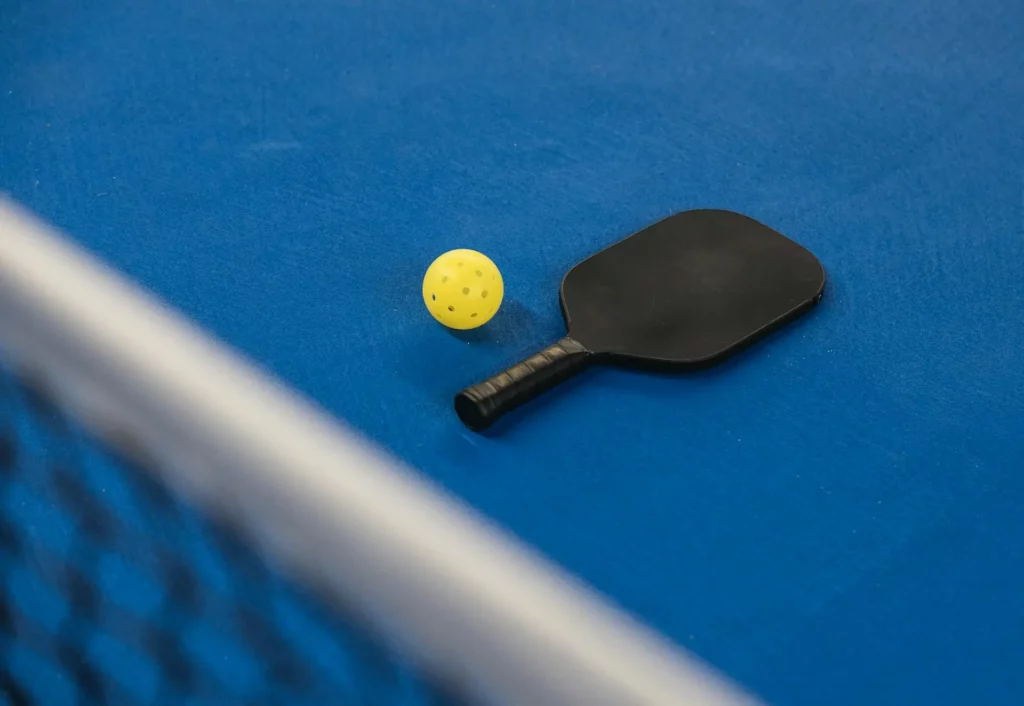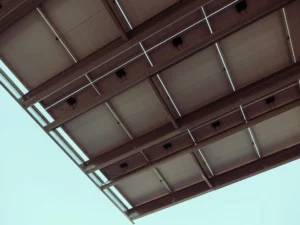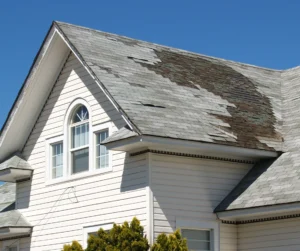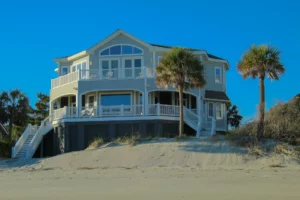Pickleball is booming in popularity—and for good reason. It’s easy to learn, fun for all ages, and doesn’t need a massive amount of space. That’s why more homeowners, schools, parks, and HOAs are investing in their very own pickleball courts. But one of the first questions people ask is:
How much space do you need for a pickleball court?
If you’re dreaming of building one at your home or property in San Diego County, this guide will walk you through everything you need to know—from court size and layout to construction costs and long-term benefits.
What Are the Dimensions of a Pickleball Court?
Let’s start with the basics. A standard pickleball court is:
- 20 feet wide
- 44 feet long
These measurements include the 2-inch boundary lines for both singles and doubles play. So, the space required for actual play is surprisingly compact, especially when compared to tennis courts, which are more than double the size.
However, just focusing on the playable surface doesn’t tell the whole story. You also need room around the court for movement and safety.
How Much Total Space Do You Really Need?
Minimum recommended area: 30 feet wide by 60 feet long
Ideal area for tournament-style play: 34 feet wide by 64 feet long
What Surfaces Work Best?
The surface of your pickleball court matters just as much as the space.
Most outdoor courts are made with:
- Concrete (most common and durable)
- Asphalt (less expensive but less smooth over time)
- Post-tensioned concrete (more expensive but resistant to cracking)
If you’re building your court from scratch, concrete gives you the best long-term results. We handle all kinds of concrete services at Ground Up Construction, including custom slabs just for sport courts like pickleball.
Indoor vs. Outdoor Pickleball Courts
Outdoor Pickleball Courts: Embrace the Elements
Indoor Pickleball Courts: Control and Comfort
While the playing dimensions of an indoor pickleball court might mirror those of an outdoor one, the requirements for the surrounding space differ significantly. High ceilings are a critical factor. The trajectory of a pickleball can be surprisingly lofty, and insufficient overhead clearance can lead to frequent interruptions and frustrating gameplay. Climate control is another essential element. Indoor courts provide the luxury of temperature regulation, allowing for comfortable play regardless of the season or weather. This consistent environment makes indoor courts ideal for year-round enjoyment. Special lighting systems are also a must. The lighting must be bright, even, and free from glare to ensure optimal visibility of the ball and court lines. Indoor court construction often comes with a higher price tag. This increase is primarily attributed to the necessary building modifications. These modifications could involve reinforcing the structure, installing specialized flooring, or adding acoustic treatments to manage noise levels.
If you’re building indoors, the footprint is similar—but the costs can double or triple based on structural needs.

How Much Does It Cost to Make a Pickleball Court?
Let’s talk numbers. Construction prices vary depending on size, surface, accessories, and location. But here’s a breakdown to guide you:
Outdoor pickleball court cost:
$15,000 to $50,000
Includes grading, concrete slab, paint, fencing, net posts, and basic lighting.
Indoor pickleball court cost:
$50,000 to $100,000+
Includes structural modifications, HVAC systems, high-durability flooring, and professional lighting.
Want to add something extra like a unique finish? Check out our Century Stone Coating option—it adds style, traction, and durability to concrete surfaces.
Why Build a Pickleball Court?
Adds Property Value
Encourages a Healthy Lifestyle
Brings People Together
Great Use of Outdoor Space
Many homeowners don’t use their full backyard. A court makes the space functional and fun.
Can You Fit a Pickleball Court in Your Backyard?
It depends on your lot size and layout. If your backyard is at least 30 x 60 feet, you may be able to fit a full-sized court.
Need help figuring it out? Our team offers free consultations and site assessments. We’ll tell you what’s possible and walk you through options like:
- Full-size vs. scaled-down courts
- Court + patio combos
- Multi-use sport surfaces (basketball + pickleball)
Reach out through our contact page to schedule yours.
Pickleball Court Add-ons That Make It Even Better
Once your court is built, you might want to add features to take it to the next level:
- Fencing – Keeps balls in play and provides safety
- Lighting – For nighttime games
- Seating or pergolas – For guests or shade
- Scoreboards or wind screens – If you’re feeling competitive
- Custom surfacing – Add colors, logos, or court lines for multiple sports
What About Pickleball Court Maintenance?
Good news—pickleball courts are low-maintenance, especially if built right.
Here’s what helps them last:
- Clean off dirt, leaves, and debris every few weeks
- Repaint lines every 5–7 years
- Inspect for cracks or surface wear annually
Ground Up Construction uses top-tier outdoor materials to reduce the chances of wear or damage. If you’re already seeing cracks or uneven surfaces, we can repair or resurface your existing court too.
Do You Need a Permit?
Why Trust Ground Up Construction?
We’ve built custom pickleball courts all over San Diego County—from small backyard builds to community and HOA projects. When you work with us, you get:
🗸 Transparent pricing and timelines.
🗸 Custom layouts and finishes.
🗸 A team that understands space, slope, and surfacing
🗸 Beautiful results built to last
Take a look at our pickleball court construction services to see what’s possible.
Let’s Build Your Court
If you’ve been thinking about it, now’s the time. A pickleball court is more than a sports space, it’s a lifestyle upgrade, an investment in health and community, and a way to make the most out of your property.
Ready to talk design, budget, or feasibility? Contact Ground Up Construction today. Let’s bring your vision to life and get you playing on your court sooner than you think.



